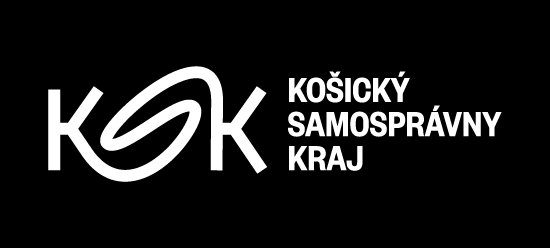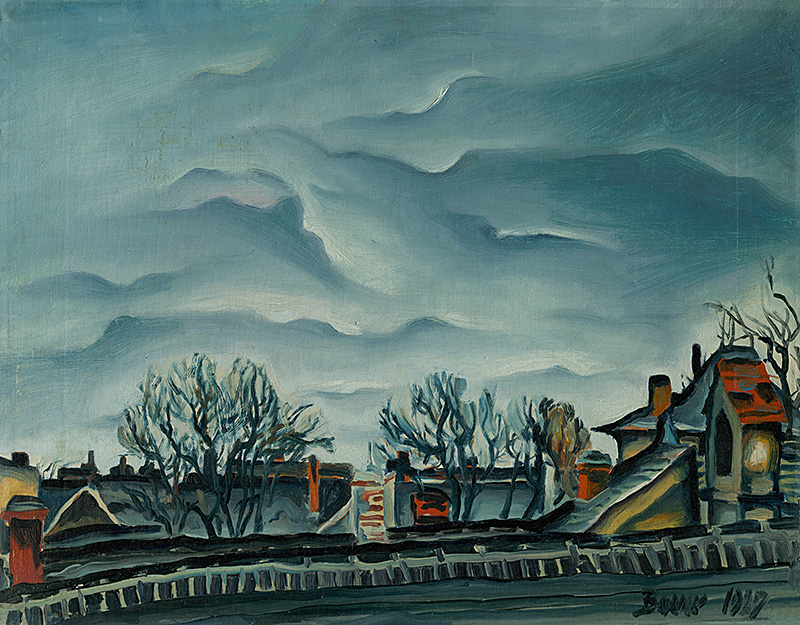opening: 26 June 2019 at 6 p.m.
duration: 27 June – 20 October 2019
East Slovak Gallery, Hlavná 27
curator: Miroslav Kleban
“A typical feature of the inhabitants of the city of Košice is their sense of urban belonging which has always been a part of their lifestyles, even if not explicitly demonstrated. This feature can also be linked to the intimacy and immediateness of our urban existence in Modernism, reflecting our self-perception within our immediate surroundings. While the movement known as Slovak National Modernism drew its inspiration from villages, folklore and untouched mountain areas, Košice Modernism was based on the environment of cities, whose exploitation thrived even though individual artists did not directly recognise the changes and characteristic concepts of modern civilisation”. (Tomáš Štrauss)
This thematically specific exhibition presents an artistic depiction of the city of Košice between the two world wars. After the events of 1918, Košice changed from a provincial city of Upper Hungary into a multicultural centre of avant-garde thinking located in a newly established republic. While a great number of artworks belonging to Košice Modernism are today a part of various international projects (Years of Disarray 1908 – 1928 / Avant-Gardes in Central Europe – Olomouc, Krakow, Bratislava, Pécs; 1918 – 1938: The First Czechoslovak Republic – Trade Fair Palace, Prague), the presented collection thematically focuses on urban motifs. The strong urban character of Košice is not a mere tendentious construct but harks back to the period of the Middle Ages. In 2019, the city commemorates the 650th anniversary of receiving its first coat of arms, which is the oldest in Europe. The granting of a coat of arms to Košice reflected the economic growth of the city and the favour of Hungarian kings. The advanced and mindful urban culture of Košice was also enhanced by the mature religious spirit of the city, which inspired the construction of the Košice cathedral and the creation of specific religious models revered by the Košice citizenry (Marian cult, Pilgrimage cult of Holy Blood, Cult of St. Elizabeth). The city’s significant position within the region of Upper Hungary was anchored in its economic prosperity, freedom and diversity of confessions and geopolitical importance. A peaceful cohabitation of different cultural groups endured until the interwar period. During the period of great political changes, Košice became a site of pilgrimage and asylum. Therefore, the city’s “portraiture” become an individual genre and resonated in the art of several representatives of Košice Modernism, while determining the socio-critical character of Košice’s art. This urban genre of Modernism aspires to a more detailed depiction of real life – life in cafés, public and private life, work and social issues, symbolism of industrial development, as well as disturbing visions and utopias.
The pluralist character of the Košice Circle of the 1920s and 30s did not facilitate its conventional classification, while the unique character of Košice Modernism was based on the intersection and movement of individuals who were charged with a revolutionary zeal. The artistic migration to Košice enhanced the city’s multicultural character and created favourable conditions for the articulation of new avant-garde ideas. After the fall of the First Hungarian Republic, the city welcomed Hungarian (mostly leftist) avant-garde artists. Among the most significant personalities were Alexander Bortnyik, a representative of Hungarian Constructivism coming from the environment of German Bauhaus, the graphic artist Eugen Króna, who was a representative of expressive Neoclassicism, and the philosopher János Mácz. The application of a new statehood in Košice was carried out by officers who came from Prague and dealt with the city’s administrative issues. One of the personalities coming from the Czech environment was the Jewish lawyer Dr. Josef Polák, who presided over the East Slovak Museum from 1919 to 1938. On Polák’s invitation the city received several artists (František Foltýn, Gejza Schiller, Eugen Krón). Polák’s correspondence motivated a cultural exchange in Central Europe and transformed Košice into a complex artistic centre within the region of Slovakia and Ruthenia.
The domestic tradition of avant-garde art was in Košice maintained by local artists whose main meeting point became the circle around the Króna’s School. Among the most significant students were Július Jakoby, Ľudovít Feld, Imrich Oravecz and Koloman Sokol. These artists were fully dedicated to the city of Košice, and their artwork was influenced by the city’s topography and the lifestyle of its citizens. The most striking deviation from the local scene was taken by the autodidact and local artist Konštantín Bauer. His artwork dwelled within the borders of figurative and objective motifs and, similarly to Krón, he drew his inspiration from the old city of Košice and its periphery. Bauer’s artworks featured the greatest range of social and humanistic themes, which were directly inspired by the grand movement of European Expressionism. Another artist whose career was connected with the East Slovak Circle was Anton Jasusch. His artistic career was interrupted by the First World War, when he found himself imprisoned by the Russians. After returning to his hometown of Košice in 1920 he reconnected with his old artistic Symbolistic programme, while introducing expressive allusions and a new perspective on human destiny.
The collection of artworks from the interwar period represents one of the cornerstones of the East Slovak Gallery collection fund. Due to its complexity and completeness, this collection of the 1920s and 30s art became the basis of presentation and research activities. The multifaceted theoretical anchoring of the project was published in monographies and the first complete publication. The project Košice Modernism: Art of Košice in the 1920s was initiated by the East Slovak Gallery in 2010 as a part of the programme of Košice – European Capital of Culture 2013.




